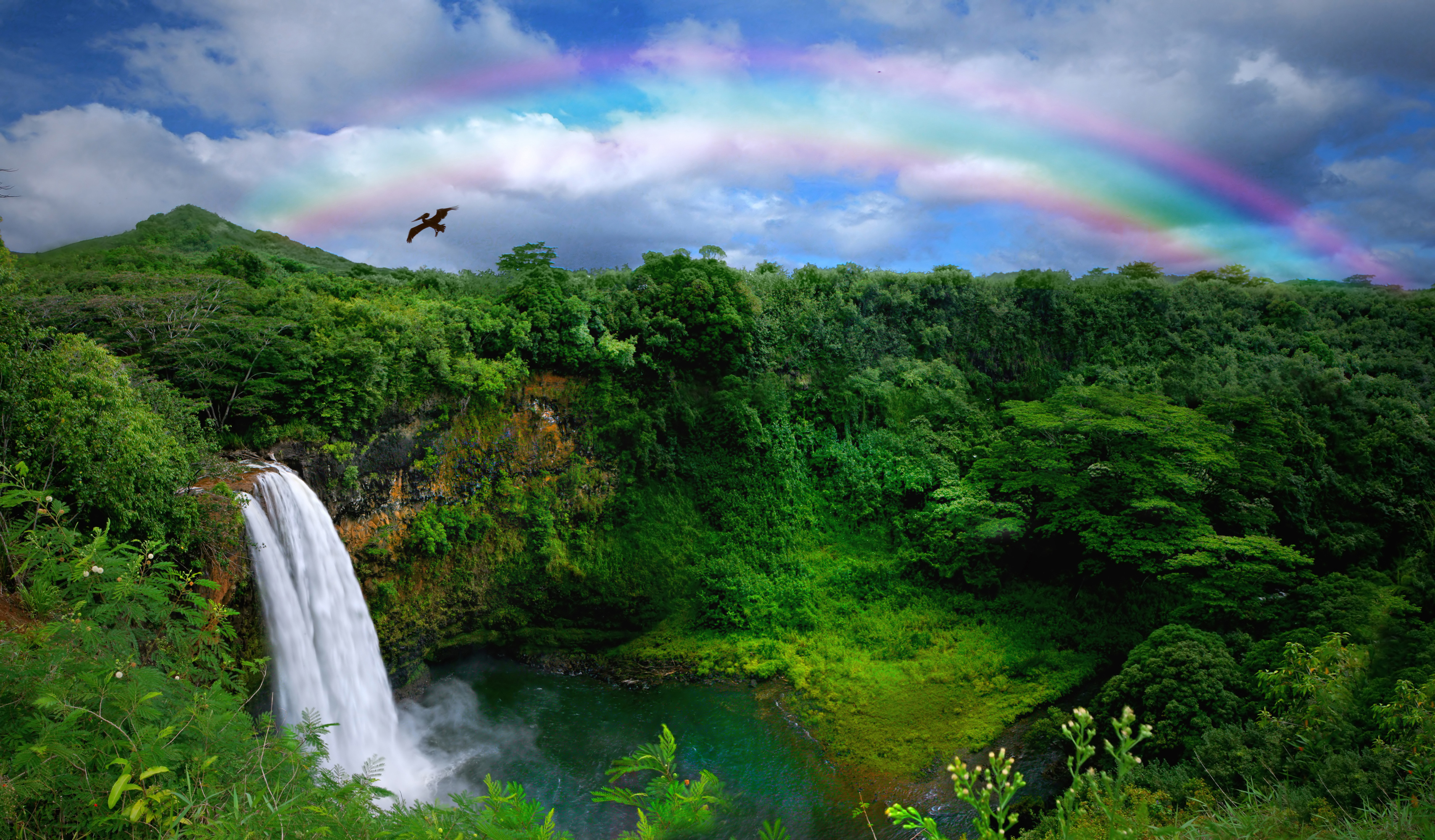
©Adobe Stock | Kauai, Hawaii
Pre-reading questions:
I will read each question. Then, please answer them.
- What is the most beautiful thing in nature? Why?
- How do you feel when you are in nature? Why?
Vocabulary:
I will read the words, meanings, and sample sentences. Then, repeat after me.
- widely /WAHYD-lee/
- archipelago /ahr-kuh-PEL-uh-goh/
- dense /dens/
- intertwine /in-ter-TWAHYN/
- community /kuh-MYOO-ni-tee/
[adverb] – by many
The English language is widely spoken throughout the world.
[noun] – a group of small islands or an area of sea in which there are many small islands
Indonesia is known as the largest archipelago in the world.
[adjective] – close together and difficult to go or see through; thick
The mountain area is located in the dense forest.
[verb] – to twist or be twisted together, or to be connected so as to be difficult to separate
The tree branches intertwine to form a roof over the path.
[noun] – the people living in one particular area or people who are considered as a unit because of their common interests, social group, or nationality
The police and the local community have a better relationship now.
Article reading:
Please read the whole article. Then, I will check your pronunciation and intonation.
Hawaii used to be a remote island home to only local residents and wildlife. Now, it’s widely known as a must-visit tourist destination.
But as the state has opened up to the rest of the globe, the native species of Hawaii are under increasing pressure to survive. The US-based Nature Conservancy (TNC) is working with the local population to restore the archipelago’s original forests. The largest state forest reserve, Ka’ Forest Reserve, is located in the Ka’ region, where TNC biologist Chris Balzotti has been in charge of a thorough restoration project. The project started in 2002 to conserve the intact woods on 3,548 acres of the 61,500 acres of the Ka’ Forest Reserve. A guided tour of the native forest takes place among the dense hi’a and koa trees, including the uluhe and hpu’u ferns, which intertwine to form a stunning forest shade. Here, rare native species like the nuku ‘i’iwi thrive, and many birds have a secure spot to lay their eggs. This priceless piece of land is also home to the Hawaiian Happy-Faced Spider.
“It’s important to have native areas like this because it allows the indigenous community to connect with the species that are culturally important to them,” senior scientist and cultural advisor for TNC Dr. Sam Gon says. “Their relationship to the land is sacred. We take that sacred trust seriously.”
But as the state has opened up to the rest of the globe, the native species of Hawaii are under increasing pressure to survive. The US-based Nature Conservancy (TNC) is working with the local population to restore the archipelago’s original forests. The largest state forest reserve, Ka’ Forest Reserve, is located in the Ka’ region, where TNC biologist Chris Balzotti has been in charge of a thorough restoration project. The project started in 2002 to conserve the intact woods on 3,548 acres of the 61,500 acres of the Ka’ Forest Reserve. A guided tour of the native forest takes place among the dense hi’a and koa trees, including the uluhe and hpu’u ferns, which intertwine to form a stunning forest shade. Here, rare native species like the nuku ‘i’iwi thrive, and many birds have a secure spot to lay their eggs. This priceless piece of land is also home to the Hawaiian Happy-Faced Spider.
“It’s important to have native areas like this because it allows the indigenous community to connect with the species that are culturally important to them,” senior scientist and cultural advisor for TNC Dr. Sam Gon says. “Their relationship to the land is sacred. We take that sacred trust seriously.”
Comprehension questions
I will read each question. Then, please answer them based on the article.
- What organization is working with the locals to restore Hawaii’s original forests?
- Where is the Ka’ Forest Reserve located?
- Who is in charge of the restoration project?
- When was the restoration project initiated?
- What can be found in the native forest?
Discussion questions
I will read each question. Then, please answer them.
- What is the ideal place to view or experience nature in your country?
- What are the top three natural wonders in your list of travel destinations?
- If given the chance, would you participate in the restoration effort in the Ka’ region? Why?
- Is Hawaii a popular tourist destination for people in your country?
- What effects does nature have on our well-being?